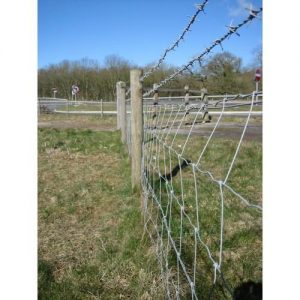A Plyboard guide

First of all choosing, the correct plywood for a job can be a daunting task. Furthermore, certain building regulations require specific grades of plywood. As a result, we at Bryan Watkins & Son Ltd have comprised a small guide to help you guys out.
First of all plywood or plyboard is a manufactured sheet material. Furthermore, plywood is created by glueing several thin layers Of Softwood Or Hardwood Veneers together. Also, the Plywood layers are bonded in a way so that the grains are running against each other. Consequently, this process makes the Plywood highly resistant to expanding or shrinking. Furthermore, the process makes the plyboard less likely to split at the edges. Therefore the ply’s strength is consistent in all directions making the sheet extremely durable.
Plywood Standards
Most noteworthy did you know that plywood only consists of only two materials? Wood veneers and glue. The interaction between the two determines the performance of the Plywood.
- EN 314-2: 1993 – Plywood – Bonding Quality, Requirements
- EN 636: 2003 – Plywood – Specifications
Bonding Quality & Specifications
This defines the three classes of bond on the intended end use of the Plywood. Furthermore, the bonding quality is determined by the type of adhesive and the plywood layered core.
- Class 1: This plywood is to be used in a dry interior Only.
- Class 2: Suitable For Use In Humid Areas Or Exposure To Occasional Wetting.
- Class 3: This class of plyboard is suitable for unprotected exterior use or exposure to frequent wetting.
Structural Grade Plywood
Structural grade plywood comes with a proof of strength performance report provided by the manufacturer. Evidentially this grade of Plywood should conform to BS5268 standards. Alternatively, this may also be referred to as CE2+.
General Plywood
This Does Not Have Strength Performance Data Provided By The Supplier And So Should Not Be Used In A Structural Application.
Both Types Of Constructional Plywood Can Be Used In The Three End-Use Classes For Plywood Defined In The European Standard EN 636, As Below:
Exterior Use – Permanently Outside Exposed To The Weather:
- Structural EN 636-3 S
- General EN 636-3 G
Humid Use – Most Construction Uses Fall Into This Category. Therefore, ply sheets will often be covered. And furthermore rarely Exposed To Weather, But Still At Risk Of Wetting:
- Structural EN 636-2 S
- General EN 636-2 G
Dry Use – Interior With No Risk Of Wetting:
- Structural EN 636-1 S
- General EN 636-1 G
Construction
The Most Common Types Of Plywood Available For Use In UK Construction Are Structural Plywood For Humid Uses (EN 636-2S) And General Plywood For Humid Uses (EN 636-2G). Even more, Plyboards constructed from Durable Resins. Which Are Suitable For Most Construction Uses. Plywood For Exterior Use Is Also Available But May Be Less Cost Effective As Both The Resins And The Wood Veneers Within The Product Must Be Durable In The Long Term.
Plywood Grades
Grading Refers To The Appearance Of The Board And Varies From Country To Country. The Most Common Grades Encountered When Buying Constructional Plywood Are:
Brazilian Grades
- C+/C Face Knots Filled And Repaired/Reverse Open Knots
- B/C No Knots In Face/Open Knots In Reverse
- B/B No Knots Face Or Back
Malaysian/Chinese Grades
- B/BB One Piece Face Veneer Uniform In Colour/Occasional Filler On Reverse
- BB/CC One Piece Face Veneer, Colour Variation, Occasional Filler To Max 2 X 300 Mm/Reverse Occasional Patches And Filler And Pin Worm
Types Of Plywood
Plywood Has Many Different Variations, The Most Basic Types Are:
- Softwood Plywood This Is Usually Made Either Of Cedar, Douglas Fir Or Spruce, Pine, And Fir (Collectively Known As Spruce-Pine-Fir Or SPF) Or Redwood And Is Typically Used For General Building, Roofing Or Concrete Formwork Where Its Mechanical Function Is More Important Than Its Appearance.
- Hardwood Plywood: This Is Made Of Wood From Angiosperm Trees And Used For Demanding End Uses. Hardwood Plywood Is Characterized By Its Excellent Strength, Stiffness And Resistance To Creep. It Has A High Planar Shear Strength And Impact Resistance, Which Make It Especially Suitable For Heavy-Duty Floor And Wall Structures. Hardwood Plywood Has Excellent Surface Hardness, And Damage- And Wear-Resistance.
- Marine Plywood: This Is Manufactured From High-Quality Face And Core Veneers, In Biologically Durable Hardwoods, Incorporating Advanced Resin Technology To Give Long Life In Both Humid And Wet Conditions. It Is Intended For Use In Most Applications Where A Good Resistance To Wood-Destroying Organisms Is Of The Highest Importance.
Other Commonly Used Terms When Describing Plywood Include:
- Shuttering Plywood: Normally The Cheapest Type Of Plywood This Is Used For Boarding Up Or Making Formwork For Poured Concrete. It Will Have Poor Quality Face Veneers With Knots And Defects, And May Have Some Voids Within The Core.
- WBP Plywood: Much of The Plywood Sold In Builders Merchant Is Made To An Exterior Grade Referred To As ‘WBP’ (Weather And Boil-Proof). This Means That The Glue Line Will Not Break Down When Subjected To Adverse Weather Conditions And Can Also Withstand Immersion In Boiling Water.
Using Plywood
- Plywood Should Be Cut Using Powered Saws To Avoid Splintering. Before Making The Cut Score A Line With A Knife To Sever The Surface Fibres.
- Due to the Alternating Grains Plywood Is Can Be Joined With Screws Even Close To Its Edge.
- Finally higher Quality Plywood Boards May Be Painted Or Treated With A Preservative.
Sourced from ABC Depot














